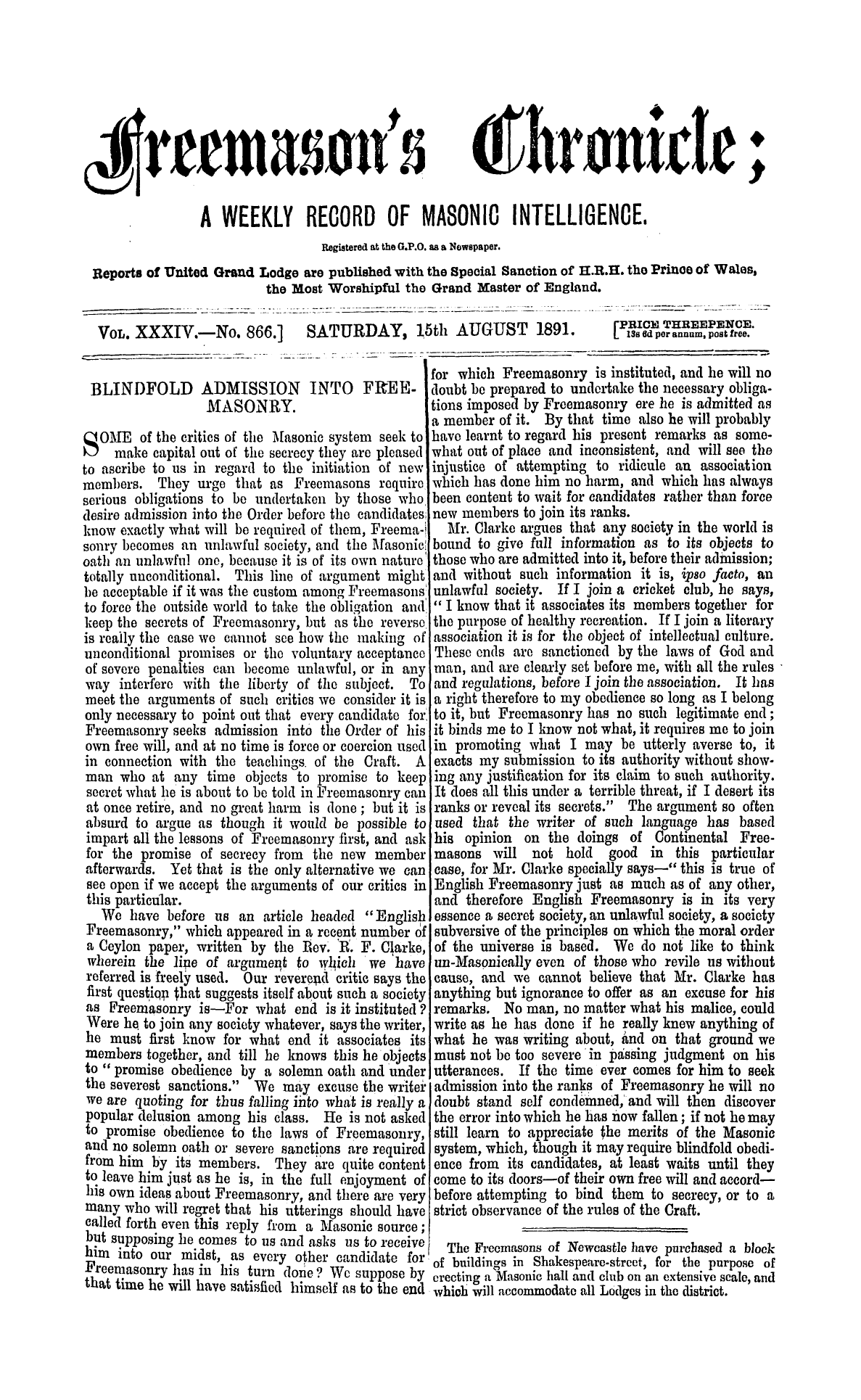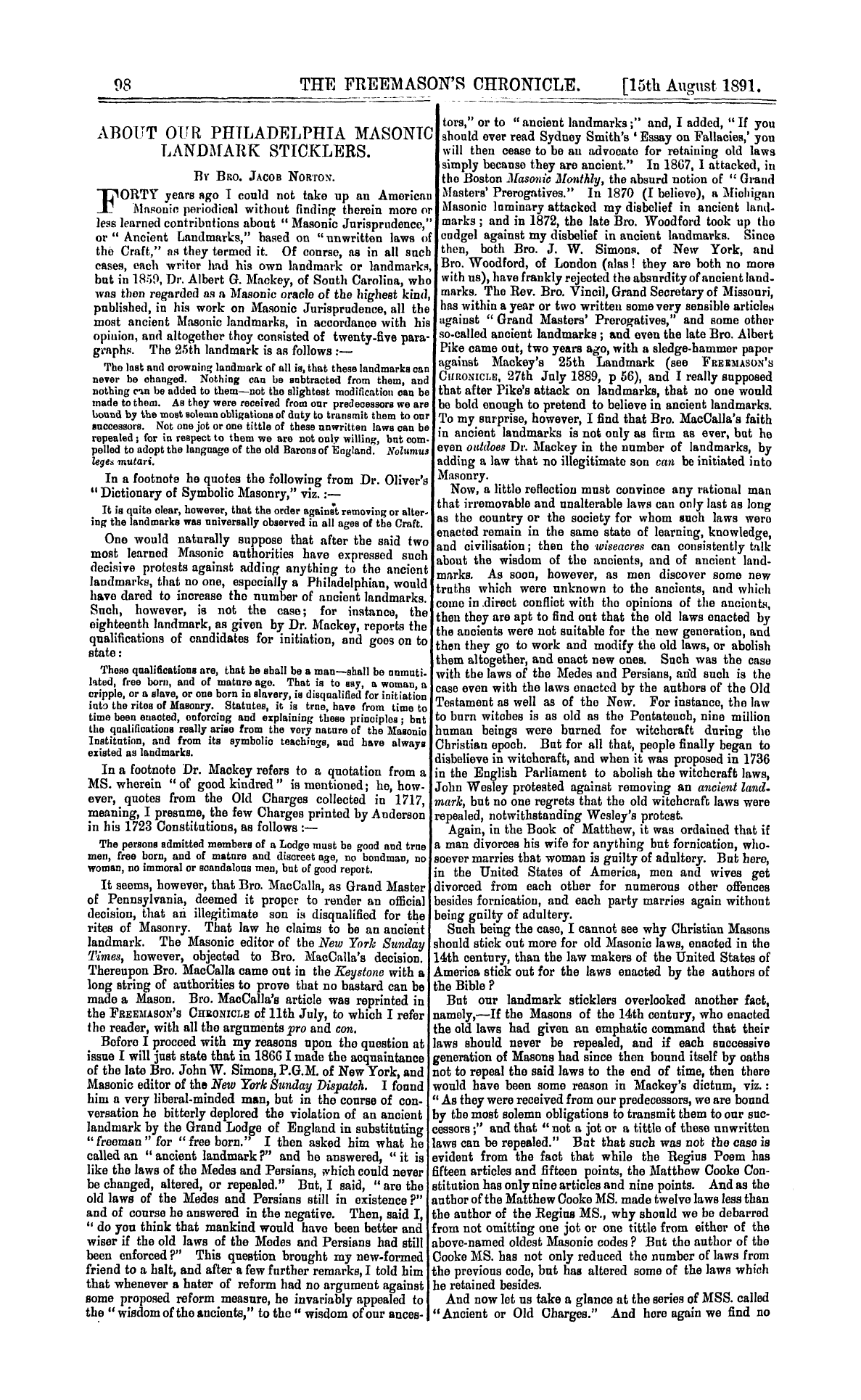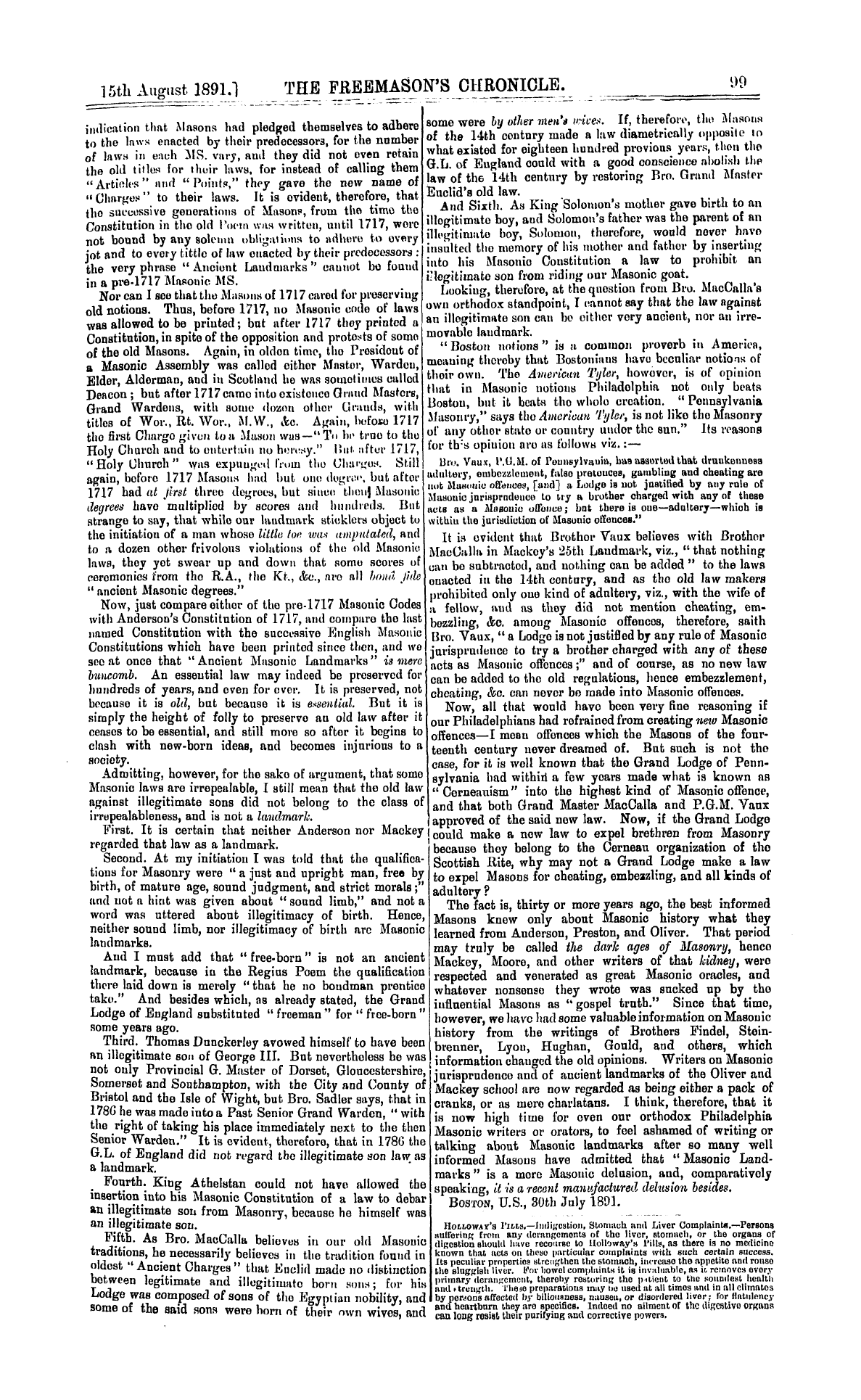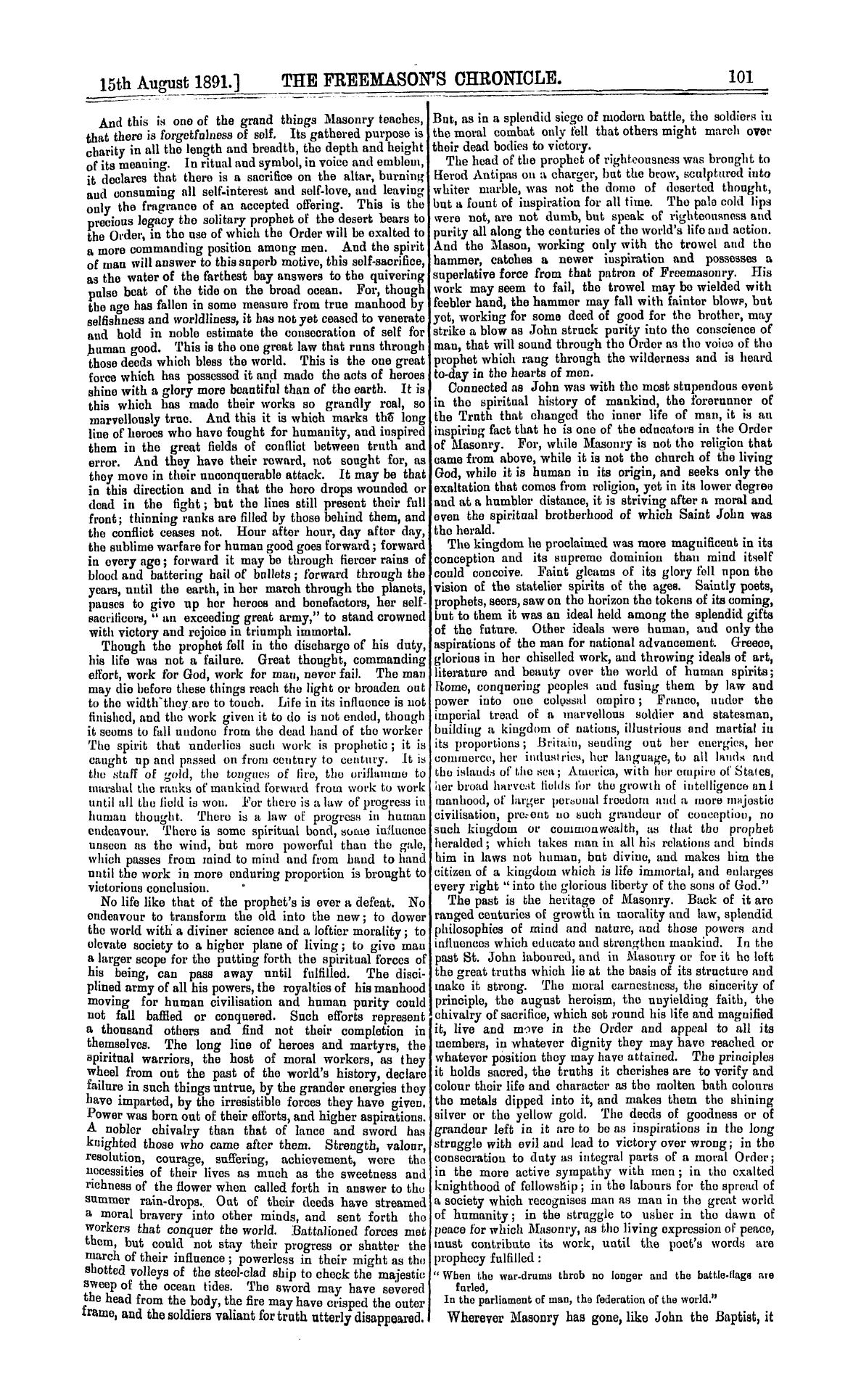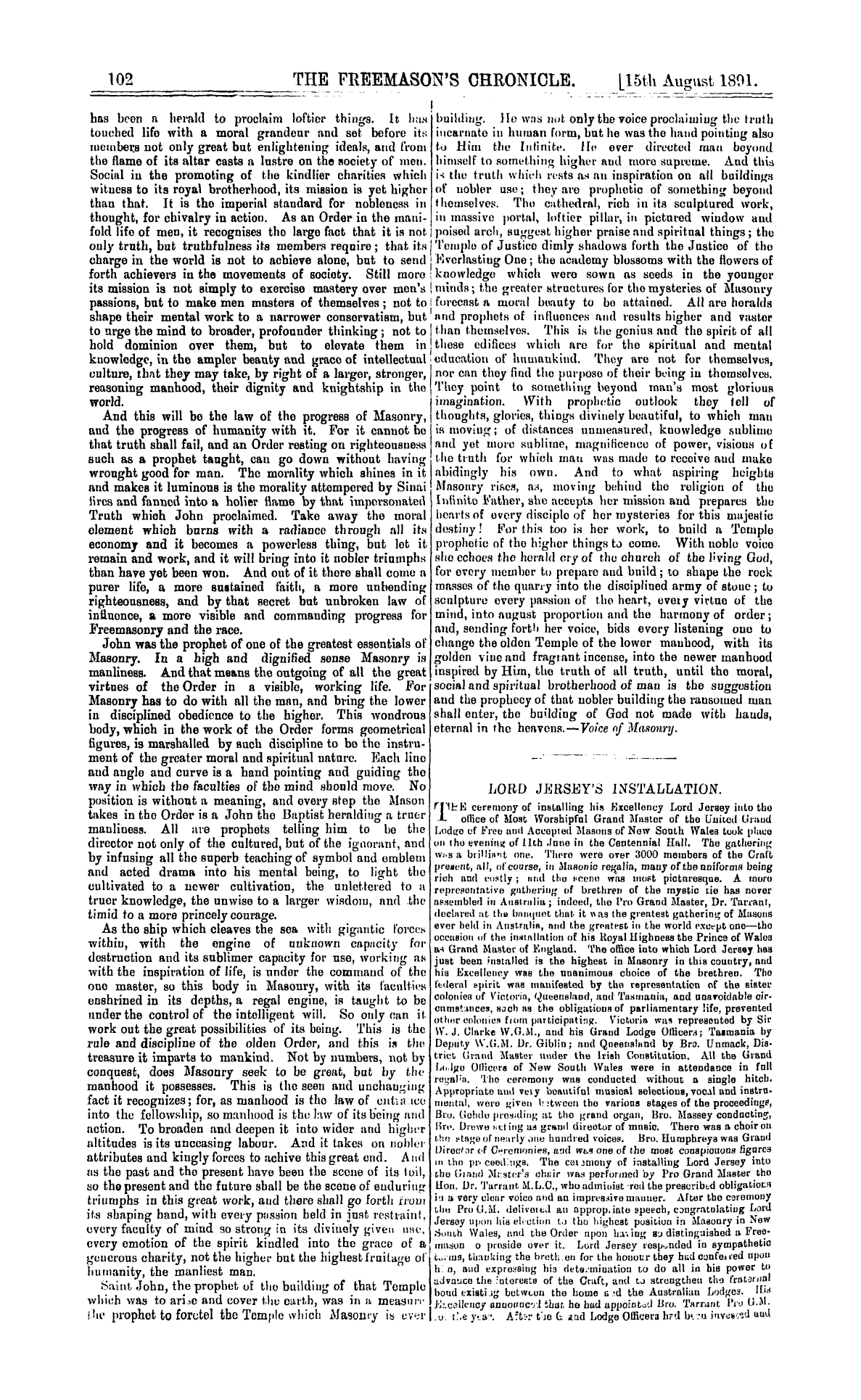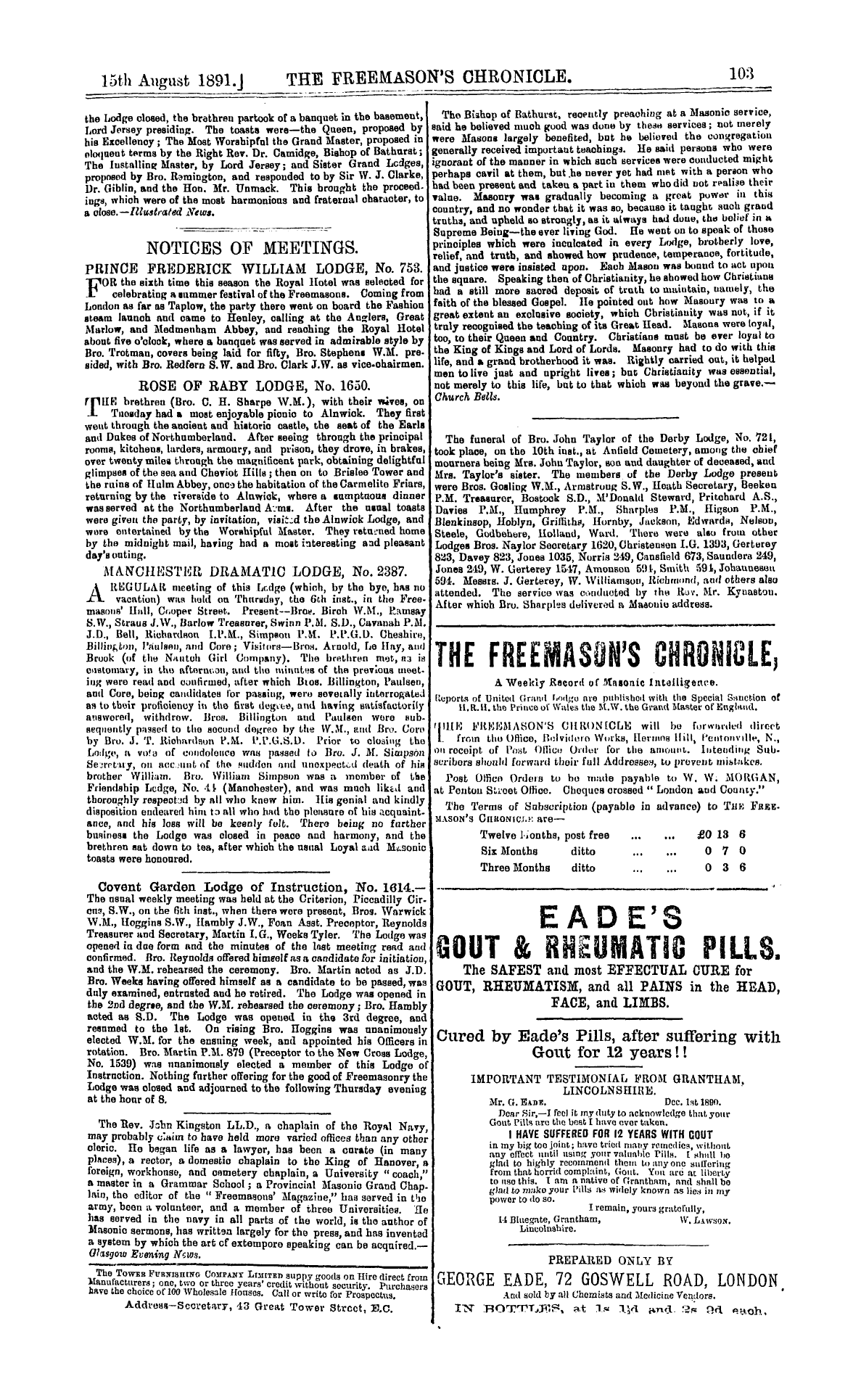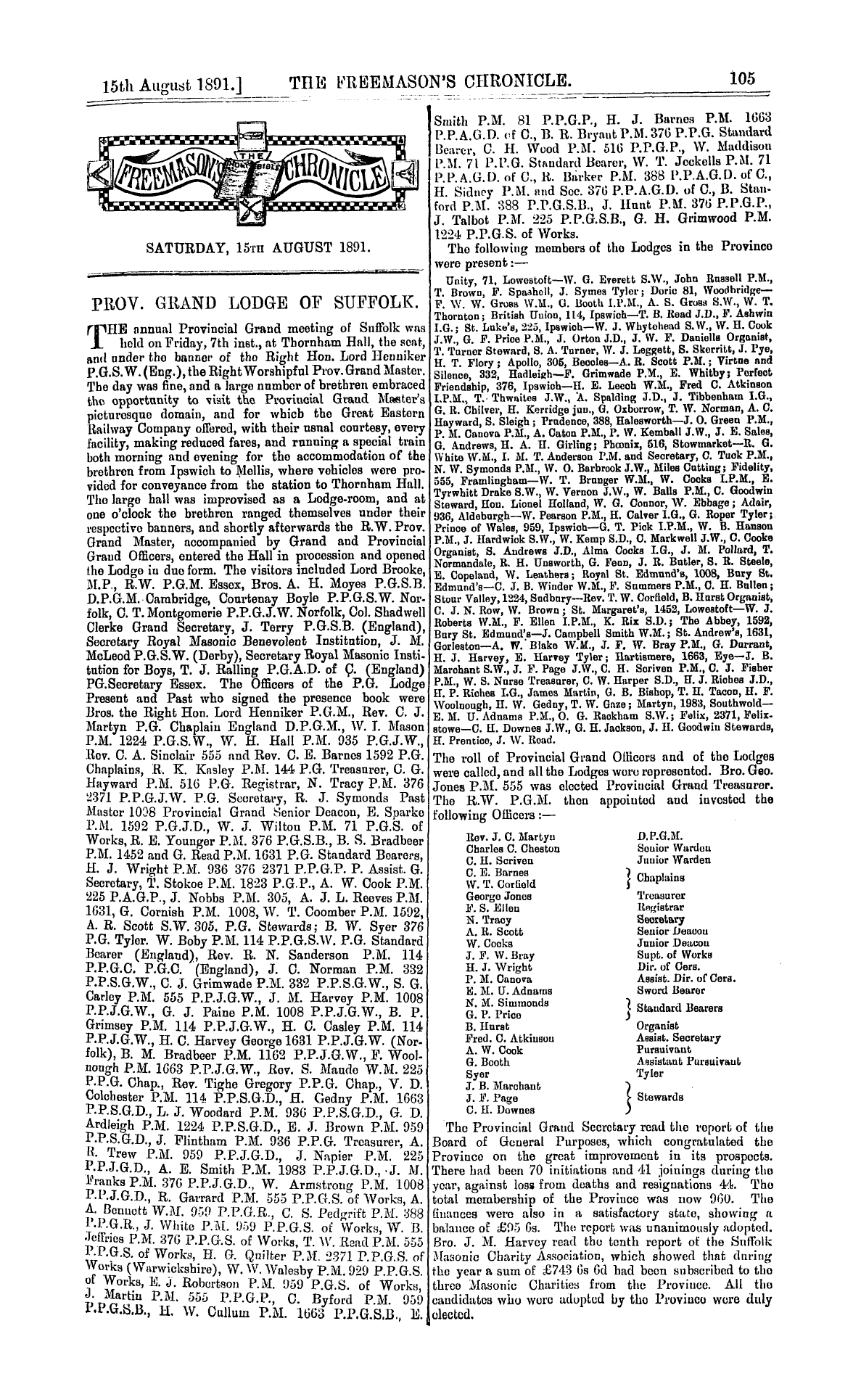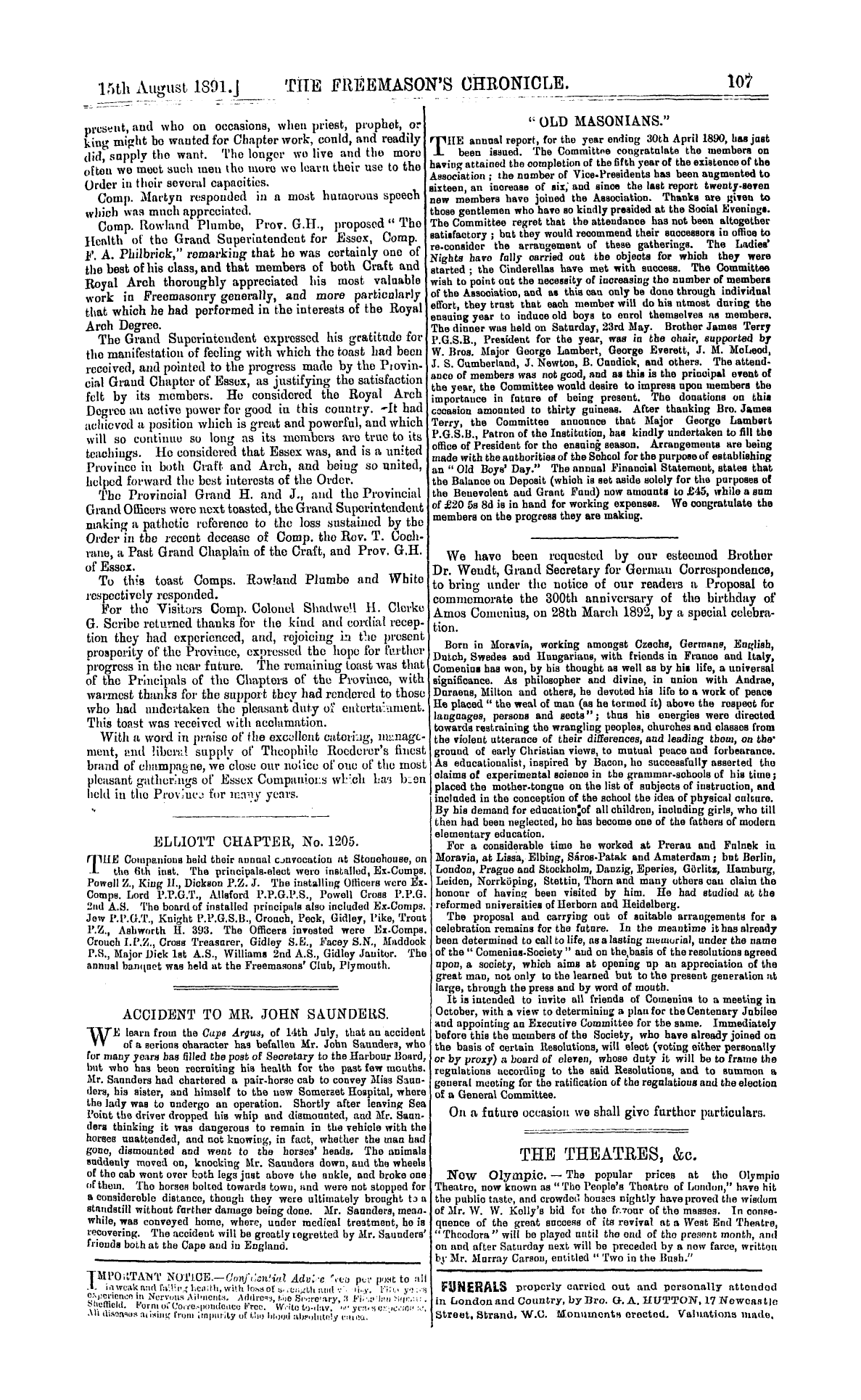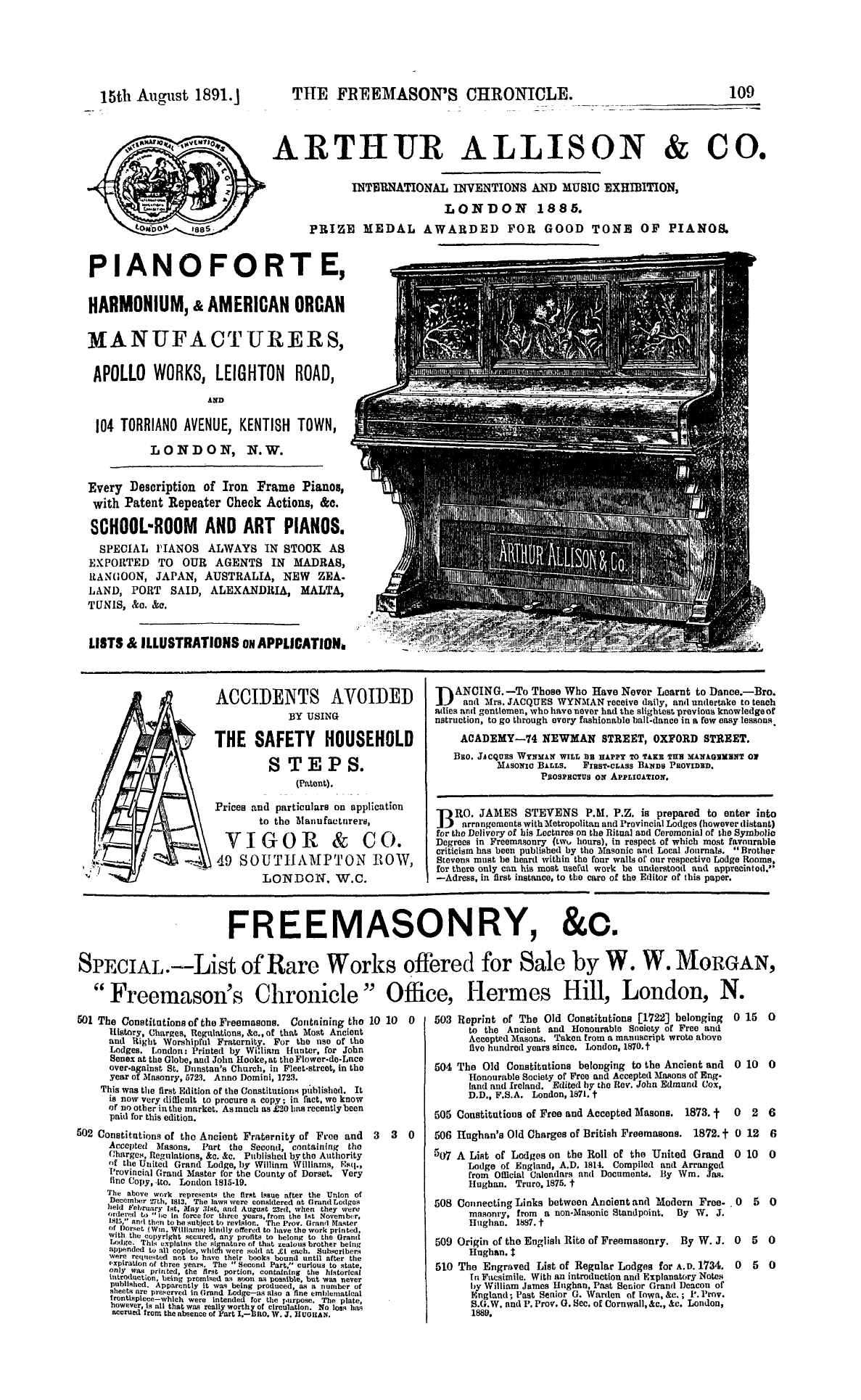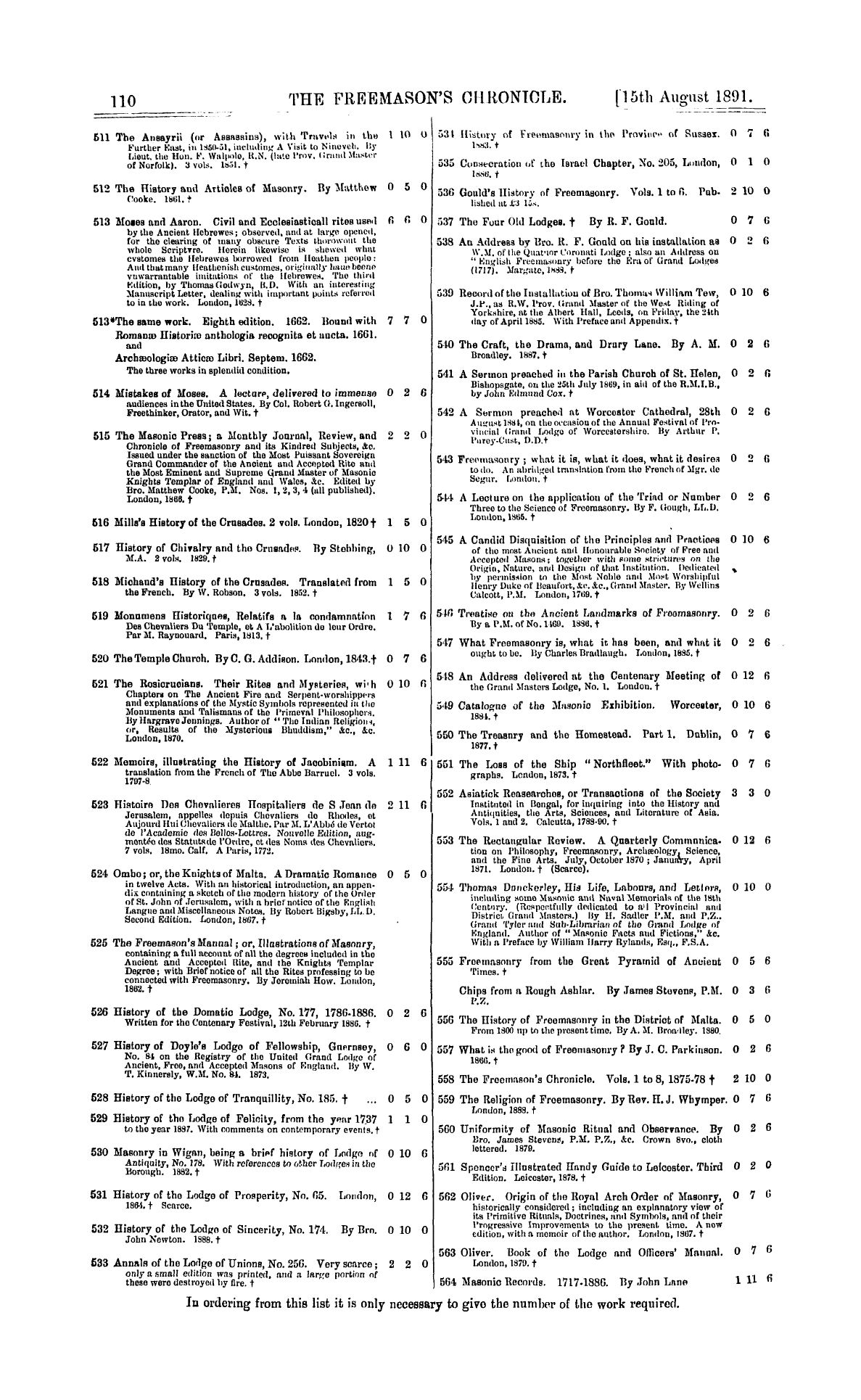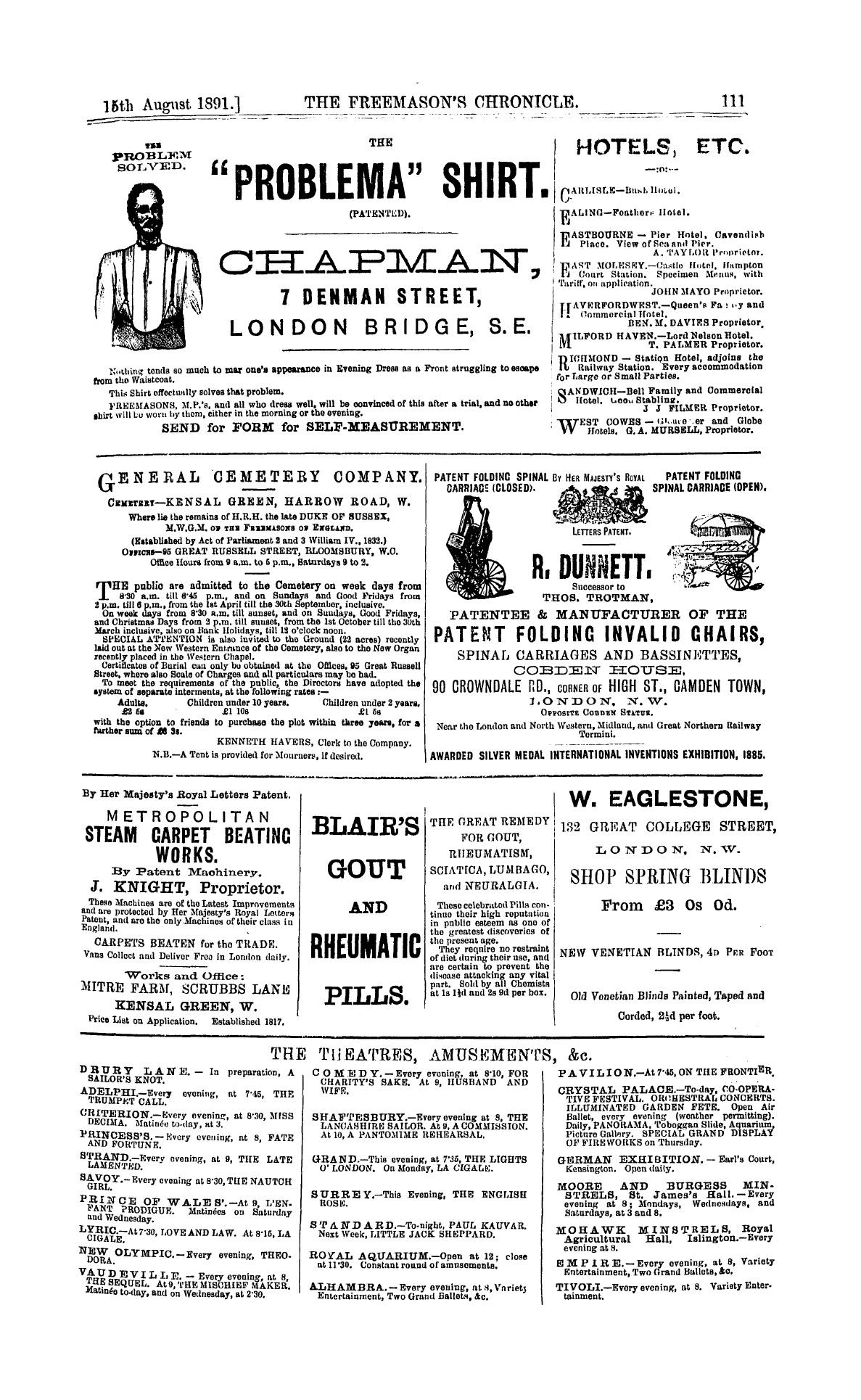Note: This text has been automatically extracted via Optical Character Recognition (OCR) software.
About Our Philadelphia Masonic Landmark Sticklers.
ABOUT OUR PHILADELPHIA MASONIC LANDMARK STICKLERS .
Bv BRO . JACOB NORTON . I / lORTY years ago T could not take up an American So Masonic periodical without finding therein moro or less learned contributions about " Masonic Jurisprudence , " or " Ancient Landmarks , " based on " unwritten laws of the Craft , " as they termed it . Of course , as in all such
cases , each writer had his own landmark or landmarks , but in 1850 , Dr . Albert G . Mackey , of South Carolina , who was then regarded as a Masonic oracle of the highest kind ,
published , in his work on Masonic Jurisprudence , all the most ancient Masonic landmarks , in accordance with hia opinion , and altogether thoy consisted of twenty-five paragraphs . The 25 th landmark is as follows : —
The last and crowning landmark of all ia , that these landmarks can never be changed . Nothing can be subtracted from them , and nothing can be added to them—not tho slightest modification can be made to them . As they were received from onr predecessors we are
bound by the most solemn obligations of duty to transmit them to onr successors . Not one jot or one tittle of these unwritten laws can be repealed ; for in respect to them we are not only willing , bnfc compelled to adopt the language of the old Barons of England . Nolumus leges mutari .
In a footnote he quotes the following from Dr . Oliver ' s " Dictionary of Symbolic Masonry , " viz .: — It is quite clear , however , that the order against removing or altering the landmarks was universally observed in all ages of the Craft . One would naturally suppose that after the said two
most learned Masonic authorities have expressed such decisive protests against adding anything to the ancient landmarks , that no one , especially a Philadelphian , would have dared to increase tho number of ancient landmarks .
Such , however , is not the case ; for instance , the eighteenth landmark , as given by Dr . Mackey , reports the qualifications of candidates for initiation , and goes on to state :
These qualifications are , that he shall be a man—shall be umnuti . lated , free born , and of mature age . That is to say , a woman , a cripple , or a slave , or one born in slavery , is disqualified for initiation into the rites of Masonry . Statutes , it is trne , have from time to
time been enacted , enforcing and explaining these principles ; bnt the qualifications really arise from the very nature of the Masonic Institution , and from its symbolic teachings , and have always existed as landmarks .
In a footnote Dr . Mackey refers to a quotation from a MS . wherein " of good kindred" is mentioned ; ho , however , quotes from the Old Charges collected in 1717 , meaning , I presume , the few Charges printed by Anderson in his 1723 Constitutions , as follows : —
The persona admitted members of a Lodge must be good and trne men , free born , and of mature and discreet age , no bondman , no woman , no immoral or scandalous men , but of good report . It seems , however , that Bro . MacCalla , as Grand Master of Pennsylvania , deemed it proper to render an official
decision , that an illegitimate son is disqualified for the rites of Masonry . That law he claims to be an ancient landmark . The Masonic editor of the New York Sunday Times , however , objected to Bro . MacCalla ' s decision .
Thereupon Bro . MacCalla came out in the Keystone with a long string of authorities to prove that no bastard can be made a Mason . Bro . MacCalla ' s article was reprinted in the FREEMASON ' CHBONICLE of llth July , to which I refer tho reader , with all the arguments pro and con .
Before I proceed with my reasons upon the question at issue I will just state that in 18661 made the acquaintance of the late Bro . John W . Simons , P . G . M . of New York , and Masonic editor of the New York Sunday Dispatch . I found him a very liberal-minded man , but in the conrse of
conversation he bitterly deplored the violation of an ancient landmark by the Grand Lodge of England in substituting "freeman" for "freeborn . " I then asked him what he
called an " ancient landmark r" and he answered , " it is like the laws of the Medea and Persians , -vbich could never be changed , altered , or repealed . " But , I said , " are the old laws of the Medes and Persians still in existence ?"
and of course he answered in the negative . Then , said I , " do yon think that mankind would have been better and wiser if the old laws of the Medes and Persians had still been enforced ? " This question brought my new-formed
friend to a halt , and after a few further remarks , I told him that whenever a hater of reform had no argument against some proposed reform measure , he invariably appealed to the " wisdom of the ancients , " to the " wisdom of our ances-
About Our Philadelphia Masonic Landmark Sticklers.
tors , ' or to " ancient landmarks ; " and , I added , " If you should ever read Sydney Smith ' s ' Essay on Fallacies , ' yon will then cease to be au advocate for retaining old laws simply because they are ancient . " In 18 G 7 , I attacked , in tho Boston Masonic Monthly , the absurd notion of " Grand
Masters' Prerogatives . " In 1870 ( I believe ) , a Michigan Masonic lnminary attacked my disbelief in ancient landmarks ; and in 1872 , the late Bro . Woodford took up tho cndgel against my disbelief in ancient landmarks . Since then , both Bro . J . W . Simons , of New York , and
Bro . Woodford , of London ( alas ! they are both no more with us ) , have frankly rejected the absurdity of ancient landmarks . The Rev . Bro . Vincil , Grand Secretary of Missouri , has within a year or two written some very sensible articles ugainst " Grand Masters' Prerogatives , " and some other
so-called ancient landmarks ; and even the late Bro . Albert Pike came out , two years ago , with a sledge-hammer paper against Mackey ' s 25 th Landmark ( see FREEMASON ' CHRONICLE , 27 th July 1889 , p 56 ) , and I really supposed that after Pike ' s attack on landmarks , that no one would
be bold enough to pretend to believe in ancient landmarks . To my surprise , however , I find that Bro . MacCalla ' s faith in ancient landmarks is not only as firm as ever , but he even outdoes Dr . Mackey in the number of landmarks , by adding a law that no illegitimate son can be initiated into Masonry .
Now , a little reflection must convince any rational man that irremovable and unalterable laws can only last as long as tho country or the society for whom such laws wero enacted remain in the same state of learning , knowledge , and civilisation ; then tho wiseacres can consistently talk
about the wisdom of the ancients , and of ancient landmarks . As soon , however , as men discover somo new troths which were unknown to the ancients , and which come in . direct conflict with tho opinions of the ancients , thon they are apt to find out that the old laws enacted by
the ancients were not suitable for the new generation , and then they go to work and modify the old laws , or abolish them altogether , and enact new ones . Such was tho case with the laws of the Medes and Persians , arid such is the case even with the laws enacted by the authors of the Old
Testament as well as of tho Now . For instance , tho law to burn witches is as old as the Pentateuch , nine million human beings were burned for witchcraft during tbe Christian epoch . But for all that , people finally began to
disbelieve in witchcraft , and when it was proposed in 1736 in the English Parliament to abolish the witchcraft laws , John Wesley protested against removing an ancient land , mark , but no one regrets that the old witchcraft laws were repealed , notwithstanding Wesley ' s protest .
Again , in the Book of Matthew , it was ordained that if a man divorces his wife for anything but fornication , whosoever marries tbat woman is guilty of adultery . But here ,
in the United States of America , mon and wives get divorced from each other for numerous other offences besides fornication , and each party marries again withont being guilty of adultery .
Such being the caso , I cannot see why Christian Masons should stick out more for old Masonic laws , enacted in the 14 th century , than the law makers of the United States of America stick out for the laws enacted by the authors of the Bible ?
But our landmark sticklers overlooked another fact , namely , —If the Masons of the 14 th century , who enacted the old laws had given an emphatic command that their laws should never be repealed , and if each successive generation of Masons had since then bound itself by oaths
not to repeal the said laws to the end of time , then thore would have been some reason in Mackey ' s dictum , viz .: " As they were received from our predecessors , we are bound by the most solemn obligations to transmit them to our successors ; " and that " not a iot or a tittle of these unwritten
laws can be repealed . " Bnt that such was not tho case is evident from the fact that while the Regius Poem has fifteen articles and fifteen points , the Matthew Cooke Constitution has only nine articles and nine points . And as the author of the Matthew Cooke MS . made twelve laws less than
the author of the Regius MS ., why shonld we be debarred from not omitting one jot or one tittle from either of the above-named oldest Masonic codes ? But tho author of the Cooke MS . has not only reduced the number of laws from
the previous code , but has altered some of the laws which he retained besides . And now let us take a glance at the series of MSS . called " Ancient or Old Charges . " And here again we find no
Note: This text has been automatically extracted via Optical Character Recognition (OCR) software.
About Our Philadelphia Masonic Landmark Sticklers.
ABOUT OUR PHILADELPHIA MASONIC LANDMARK STICKLERS .
Bv BRO . JACOB NORTON . I / lORTY years ago T could not take up an American So Masonic periodical without finding therein moro or less learned contributions about " Masonic Jurisprudence , " or " Ancient Landmarks , " based on " unwritten laws of the Craft , " as they termed it . Of course , as in all such
cases , each writer had his own landmark or landmarks , but in 1850 , Dr . Albert G . Mackey , of South Carolina , who was then regarded as a Masonic oracle of the highest kind ,
published , in his work on Masonic Jurisprudence , all the most ancient Masonic landmarks , in accordance with hia opinion , and altogether thoy consisted of twenty-five paragraphs . The 25 th landmark is as follows : —
The last and crowning landmark of all ia , that these landmarks can never be changed . Nothing can be subtracted from them , and nothing can be added to them—not tho slightest modification can be made to them . As they were received from onr predecessors we are
bound by the most solemn obligations of duty to transmit them to onr successors . Not one jot or one tittle of these unwritten laws can be repealed ; for in respect to them we are not only willing , bnfc compelled to adopt the language of the old Barons of England . Nolumus leges mutari .
In a footnote he quotes the following from Dr . Oliver ' s " Dictionary of Symbolic Masonry , " viz .: — It is quite clear , however , that the order against removing or altering the landmarks was universally observed in all ages of the Craft . One would naturally suppose that after the said two
most learned Masonic authorities have expressed such decisive protests against adding anything to the ancient landmarks , that no one , especially a Philadelphian , would have dared to increase tho number of ancient landmarks .
Such , however , is not the case ; for instance , the eighteenth landmark , as given by Dr . Mackey , reports the qualifications of candidates for initiation , and goes on to state :
These qualifications are , that he shall be a man—shall be umnuti . lated , free born , and of mature age . That is to say , a woman , a cripple , or a slave , or one born in slavery , is disqualified for initiation into the rites of Masonry . Statutes , it is trne , have from time to
time been enacted , enforcing and explaining these principles ; bnt the qualifications really arise from the very nature of the Masonic Institution , and from its symbolic teachings , and have always existed as landmarks .
In a footnote Dr . Mackey refers to a quotation from a MS . wherein " of good kindred" is mentioned ; ho , however , quotes from the Old Charges collected in 1717 , meaning , I presume , the few Charges printed by Anderson in his 1723 Constitutions , as follows : —
The persona admitted members of a Lodge must be good and trne men , free born , and of mature and discreet age , no bondman , no woman , no immoral or scandalous men , but of good report . It seems , however , that Bro . MacCalla , as Grand Master of Pennsylvania , deemed it proper to render an official
decision , that an illegitimate son is disqualified for the rites of Masonry . That law he claims to be an ancient landmark . The Masonic editor of the New York Sunday Times , however , objected to Bro . MacCalla ' s decision .
Thereupon Bro . MacCalla came out in the Keystone with a long string of authorities to prove that no bastard can be made a Mason . Bro . MacCalla ' s article was reprinted in the FREEMASON ' CHBONICLE of llth July , to which I refer tho reader , with all the arguments pro and con .
Before I proceed with my reasons upon the question at issue I will just state that in 18661 made the acquaintance of the late Bro . John W . Simons , P . G . M . of New York , and Masonic editor of the New York Sunday Dispatch . I found him a very liberal-minded man , but in the conrse of
conversation he bitterly deplored the violation of an ancient landmark by the Grand Lodge of England in substituting "freeman" for "freeborn . " I then asked him what he
called an " ancient landmark r" and he answered , " it is like the laws of the Medea and Persians , -vbich could never be changed , altered , or repealed . " But , I said , " are the old laws of the Medes and Persians still in existence ?"
and of course he answered in the negative . Then , said I , " do yon think that mankind would have been better and wiser if the old laws of the Medes and Persians had still been enforced ? " This question brought my new-formed
friend to a halt , and after a few further remarks , I told him that whenever a hater of reform had no argument against some proposed reform measure , he invariably appealed to the " wisdom of the ancients , " to the " wisdom of our ances-
About Our Philadelphia Masonic Landmark Sticklers.
tors , ' or to " ancient landmarks ; " and , I added , " If you should ever read Sydney Smith ' s ' Essay on Fallacies , ' yon will then cease to be au advocate for retaining old laws simply because they are ancient . " In 18 G 7 , I attacked , in tho Boston Masonic Monthly , the absurd notion of " Grand
Masters' Prerogatives . " In 1870 ( I believe ) , a Michigan Masonic lnminary attacked my disbelief in ancient landmarks ; and in 1872 , the late Bro . Woodford took up tho cndgel against my disbelief in ancient landmarks . Since then , both Bro . J . W . Simons , of New York , and
Bro . Woodford , of London ( alas ! they are both no more with us ) , have frankly rejected the absurdity of ancient landmarks . The Rev . Bro . Vincil , Grand Secretary of Missouri , has within a year or two written some very sensible articles ugainst " Grand Masters' Prerogatives , " and some other
so-called ancient landmarks ; and even the late Bro . Albert Pike came out , two years ago , with a sledge-hammer paper against Mackey ' s 25 th Landmark ( see FREEMASON ' CHRONICLE , 27 th July 1889 , p 56 ) , and I really supposed that after Pike ' s attack on landmarks , that no one would
be bold enough to pretend to believe in ancient landmarks . To my surprise , however , I find that Bro . MacCalla ' s faith in ancient landmarks is not only as firm as ever , but he even outdoes Dr . Mackey in the number of landmarks , by adding a law that no illegitimate son can be initiated into Masonry .
Now , a little reflection must convince any rational man that irremovable and unalterable laws can only last as long as tho country or the society for whom such laws wero enacted remain in the same state of learning , knowledge , and civilisation ; then tho wiseacres can consistently talk
about the wisdom of the ancients , and of ancient landmarks . As soon , however , as men discover somo new troths which were unknown to the ancients , and which come in . direct conflict with tho opinions of the ancients , thon they are apt to find out that the old laws enacted by
the ancients were not suitable for the new generation , and then they go to work and modify the old laws , or abolish them altogether , and enact new ones . Such was tho case with the laws of the Medes and Persians , arid such is the case even with the laws enacted by the authors of the Old
Testament as well as of tho Now . For instance , tho law to burn witches is as old as the Pentateuch , nine million human beings were burned for witchcraft during tbe Christian epoch . But for all that , people finally began to
disbelieve in witchcraft , and when it was proposed in 1736 in the English Parliament to abolish the witchcraft laws , John Wesley protested against removing an ancient land , mark , but no one regrets that the old witchcraft laws were repealed , notwithstanding Wesley ' s protest .
Again , in the Book of Matthew , it was ordained that if a man divorces his wife for anything but fornication , whosoever marries tbat woman is guilty of adultery . But here ,
in the United States of America , mon and wives get divorced from each other for numerous other offences besides fornication , and each party marries again withont being guilty of adultery .
Such being the caso , I cannot see why Christian Masons should stick out more for old Masonic laws , enacted in the 14 th century , than the law makers of the United States of America stick out for the laws enacted by the authors of the Bible ?
But our landmark sticklers overlooked another fact , namely , —If the Masons of the 14 th century , who enacted the old laws had given an emphatic command that their laws should never be repealed , and if each successive generation of Masons had since then bound itself by oaths
not to repeal the said laws to the end of time , then thore would have been some reason in Mackey ' s dictum , viz .: " As they were received from our predecessors , we are bound by the most solemn obligations to transmit them to our successors ; " and that " not a iot or a tittle of these unwritten
laws can be repealed . " Bnt that such was not tho case is evident from the fact that while the Regius Poem has fifteen articles and fifteen points , the Matthew Cooke Constitution has only nine articles and nine points . And as the author of the Matthew Cooke MS . made twelve laws less than
the author of the Regius MS ., why shonld we be debarred from not omitting one jot or one tittle from either of the above-named oldest Masonic codes ? But tho author of the Cooke MS . has not only reduced the number of laws from
the previous code , but has altered some of the laws which he retained besides . And now let us take a glance at the series of MSS . called " Ancient or Old Charges . " And here again we find no
